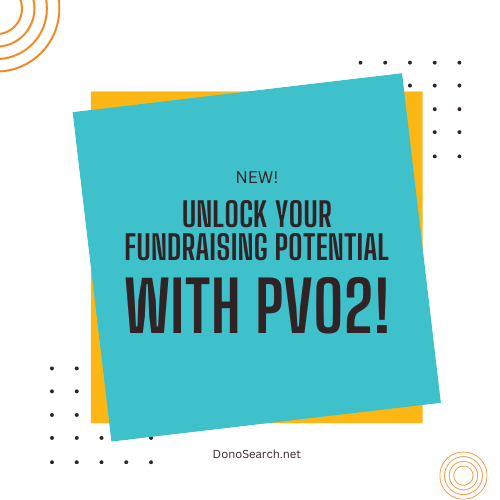
How to Become a Donor Retention Powerhouse
Donor retention beats donor acquisition every time. Why? It can cost 50-100% more to acquire new donors than the amount those new donors actually give. In fact, if you spend the same amount on meaningful touchpoints with existing donors, you’ll see a steadier stream of bigger gifts over time.[1]
[1] 3 Reasons Why Donor Retention Trumps New Donor Acquisition, Bloomerang.
Four Strategies to Become a Donor Retention Powerhouse
1. Know your current retention rates.
You need to get an understanding of your retention rates. You can calculate the number of donors you retained from last year (using the formula here). It’s also important to know the number of donors who gave more than one time, year over year.
Donor retention rate: # of retained donors divided by the # of all donors for the year.
EXAMPLE: You had 65 donors last year, and 20 of them also gave this year (you retained 20 donors). Your donor retention rate is:
20/65 = 0.308 or 30.8%
At best, the average retention rate for a nonprofit is 46% (it was down to 43.6% in 2020).[2] That means that, in order to meet their goals each year, they have to start over with 54-57% more prospects, who’ll make small gifts. So you have to work twice as hard to get new donors, while the revenue stays the same or even decreases.
[2] Fundraising Effectiveness Project: Giving Increases Significantly in 2020, Even as Donor Retention Rates Shrink, AFP Global
2. Keep in touch.
Donors need to feel they are part of the good work that you do. A key way to guarantee their investment is to build a genuine relationship–thereby gaining trust.
Through communication channels like email, social media, and your web page:
- Share your successes
- Share your struggles
- Tell stories of philanthropic dollars at work.
When you engage them directly (by mail, in-person, by email):
- Be straightforward with your asks – Don’t beat around the bush with your donors about what you need. Nobody likes to feel like they’re being fooled.
Remember: There’s a reason they gave to you in the first place. They believed in your mission. Remind them that their contributions are integral to growth. Tell your donors what you need, how you want them to give, and what their contribution means to advance your cause.
3. Invest in AI/Machine Learning Predictive Analytics.
Traditional predictive fundraising analytics (also called propensity modeling) goes beyond simply calculating your donor retention rate. It finds trends in your historical data to make predictions about future donor behavior.
AI/Machine Learning predictive models go even further than traditional analytics to provide you more predictive giving likelihood ratings of your donor pool so that you can instantly see the opportunities for retention and acquisition with greater accuracy.

PRO TIP
DonorSearch Ai’s AI/Machine Learning algorithm will save you time and effort by providing instant and highly predictive ratings of retention and acquisition opportunities in your donor and prospect pool.
4. Ask for a second gift sooner.
After the first gift, the data shows that donor retention is 23% compared to 60% donor retention after the second gift. Make sure that your first-time donor doesn’t forget about you.
Create a strategy for securing a second gift, and you will be much more likely to convert your first-time donors into regular–and upgrading–donors over time.
5. Establish a Sustainer Program.
Offer your donors the opportunity to make monthly contributions by credit card or electronic transfer. It simplifies the transaction for them, gives you a predictable income stream, and they are likely to renew:
Donors who belong to sustainer programs give 42% more annually compared to one-time donors. The average monthly donation in a sustainer program rings at $52 ($624 annually) compared to the average one-time donation of $128.[3]
[3] Why Recurring Giving Matters, Network for Good

PRO TIP
DonorSearch’s AI/Machine Learning algorithm also produces Sustainer scores, which quickly indicate opportunities for recurring gifts. Contact us to learn more about Sustainer scores and how you can get them.
6. Say “Thank You” consistently.
Do more than just send a tax receipt that has “Thank You” printed on it. Set up a process where you communicate gratitude and show the impact of philanthropic support. Your donors will feel welcomed and valued–and more likely to keep giving.

PRO TIP
With DonorSearch Ai and DonorSearch Intelligent Insights’ scores for sustained, retention, acquisition, upgrade, and lifetime value, you can quickly segment your prospect list and tailor your appeals to the opportunities and boost your success.
A donor retention plan focuses on the people already invested in your mission. You’ll increase your organization’s fundraising revenue–both immediately and long term.
BE A DONOR RETENTION POWERHOUSE!

